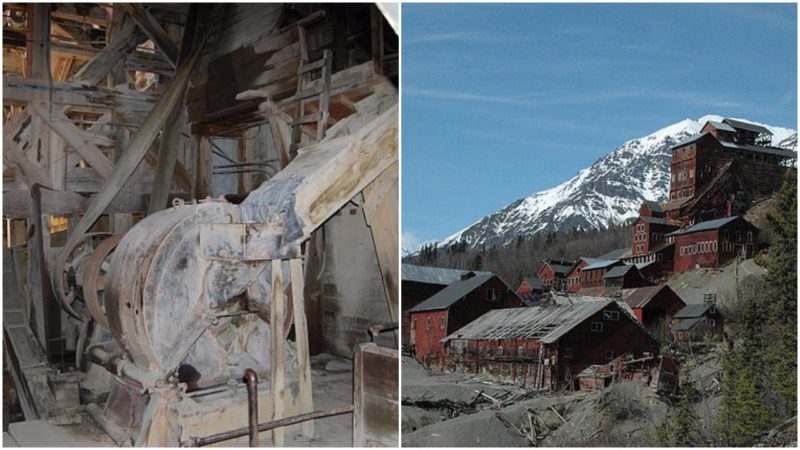Kennecott or Kennicott (also known as Kennecott Mines) is a former mining camp, now completely abandoned, situated in the Valdez-Cordova Cenzus Area in Alaska, United States of America. The site was center of activity of 5 copper mines. The town was founded around 1900 when copper ore was discovered in the area.
Copper was extremely valuable and sought after mineral because of the invention of electricity and the mass production of automobiles and telephones – this drove the demand for copper.
According to the historic documents of 1900, two miners (Jack Smith and Clarence Warner) spotted an enormous green spot on the mountainside between the Kennicott Glacier and McCarthy Creek.
It was one of the richest deposits of copper ore ever found. Six years later, a group of wealthy investors bought the existing claims and formed the Kennecott Copper Corporation.
The name was given after the Kennicott Glacier in the valley below (an administrative worker misspelled Kennicott) and thus the town of Kennecott was born. The corporation attracted workers to this isolated Alaskan mining camp because the miners were able to earn big money.
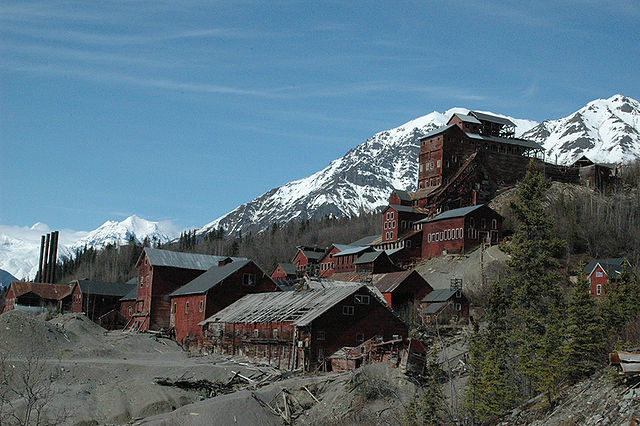
Now, Kennecott is a ghost town and the neighboring town of McCarthy has just a couple of families living there. Because Kennecott was a company town, the owners of the company strictly forbidden gambling and drinking in Kennecott.
So the miners had to go to the nearby McCarthy and soon this place flourished with its restaurants, saloons, hotels, pool halls, stores and a red light district. This town had a population of nearly 800 inhabitants and also had two newspapers, a dress shop and a shoe shop, a photography shop and auto repair shop. Some of these buildings in McCarty from this era are still in use.
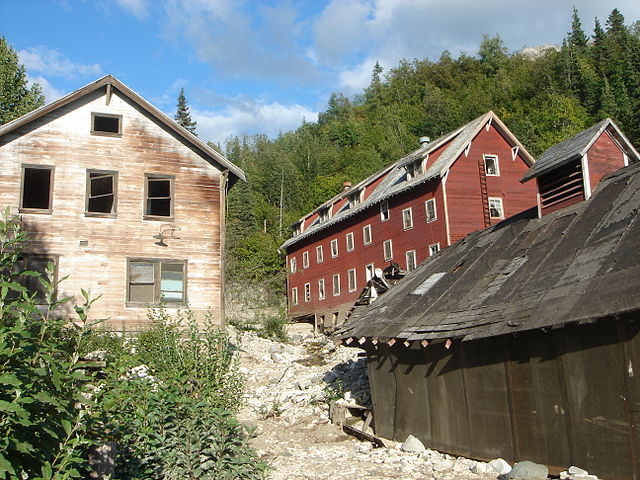
Kennecott was growing rapidly too and at its highest peak, it had more than 500 inhabitants. Those days in the town of Kennecott there were houses for the miners, a hospital, a dentist, a large store, dairy, and a recreation hall and a whole host of other buildings too.
Probably the most remarkable building in Kennecott is the 14-story Kennecott concentration mill. For the production of the copper, several other buildings were built too, like the power plant, machine shop, floatation plant, ammonia leaching plant (which was world’s first) and the general manager’s office.
The office, i.e. log cabin suitable just for one person, was the first building built in Kennecott. Most of the buildings have survived the years and the harsh climate conditions of Alaska, although some parts of them are ruined.
The Kennecott hospital, that was the only building with white walls, had the first x-ray machine in Alaska. The major part of the buildings was painted red, that was the least expensive color those days.
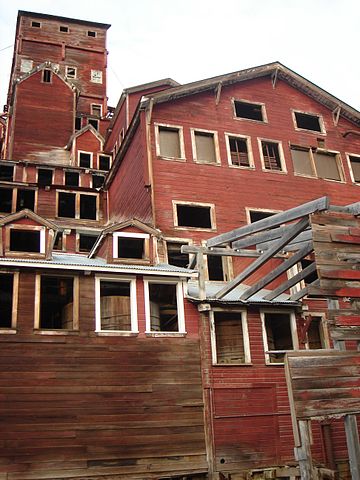
The corporation built the Copper River & Northwest Railroad for to transport the copper ore to the nearest port, which was located in the coastal town of Cordova. From there it was shipped to Tacoma, Washington, for smelting.
The construction of the railway had begun at the beginning of 1908 and from 1911-1938, when the mines were in full operation, the corporation made a net profit of more than $100 million.
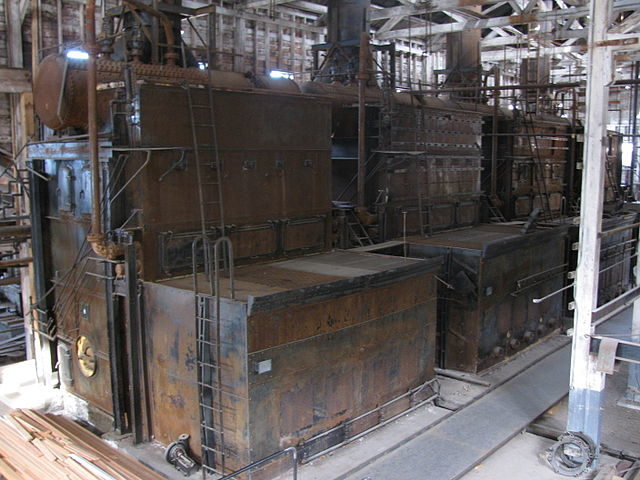
The former mines are 5 miles up in the mountains to the east/northeast. There were five mines: Bonanza, Jumbo, Mother Lode, Erie, and Glacier. At the end of the 1920s and in the early part of 1930s the mines, one by one, started to close, because the amounts of ore started to decrease and the production became unprofitable. The highest grades of ore were depleted at the beginning of the 1930s and the last train left Kennecott on November 10, 1938. After that, the town was abandoned and never populated again and it was the last time the railway was used.
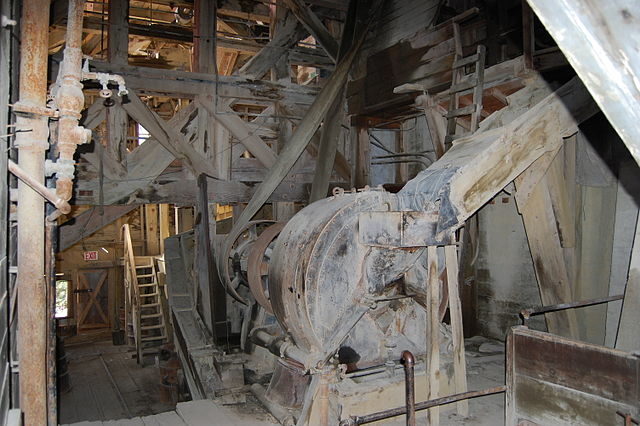
From 1939 and 1959 only a family of three, who watched over the complex, lived in the town. The area was preserved as National Park and sadly in the 1960s was by an order that they started to destroy the buildings to prevent potential accidents. But only a few structures were destroyed before the operation stopped. The small personal items and the artifacts of the former mining camp were collected in various archives and collections.
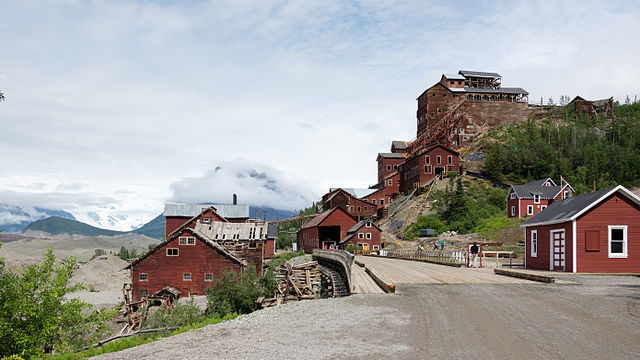
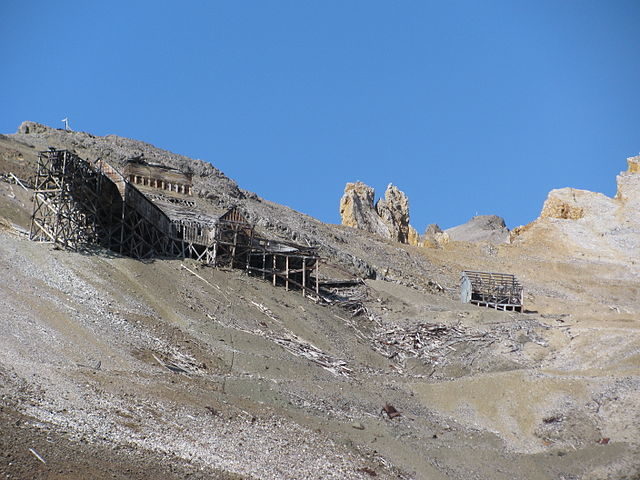
The camp and mines today are a part of Wrangell–St. Elias National Park and Preserve and the site is a National Historic Landmark District administrated by the National Park Service. The area is a popular tourist destination, where vividly can be seen the life and the work of the miners from the beginning of the 20th century.
Tourist can see the characteristic buildings, mining equipment, and personal artifacts as they were left after closing the mines. Visitors can also hike to the former mines and thankfully some of the buildings and the surrounding lands, are now in private hands ensuring their preservation.
